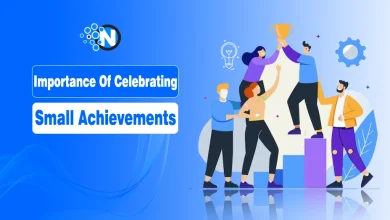Why We Keep Coming Back to the Same Social Games

The main focus of every game is making sure that the player enjoys and stays engaged within the game. Social games are usually very good at this. These games offer an engaging experience to players where they can interact with others easily.
They are not competitive and focus more on collaboration and a shared experience. Although there are many other games available to play, many people still prefer playing the same social games.
It begs the question, “Why do we keep coming back to the same social games?” That’s precisely what we are going to discuss in this article. Here, we will discuss what social games are and why people prefer playing them again and again.
What are Social Games?
Social Games are a special type of games that use player interaction and involvement to offer a better gaming experience. Unlike many other games where people either play by themselves or compete with others, these games offer a chance to engage and collaborate with each other.
This reduces the competitive pressure on players, and they get to enjoy the game more peacefully. These games usually focus on social feedback as well as player psychology to offer new features. Their main purpose is to provide a chance of interaction and involvement to players so that they can have a good time playing the game.

Why Do We Keep Coming Back to the Same Social Games?
There are a bunch of different reasons why we keep coming back to and playing the same social games. Here are some of the biggest reasons:
1. Easy to Learn, Hard to Master
A major barrier to entry for any group game is complexity. If the rules take 15 minutes to explain, or worse, you need a guidebook, the game’s momentum dies before it starts. The best social games are immediately accessible but still have layers that keep people engaged.
Games like Flip Cup or Drunk Jenga are timeless because their rules are instinctive. Even first-timers understand the game within seconds, and gameplay encourages improvisation and creativity.
This core design principle carries over into digital social games. Platforms like Highroller, the innovative and expanding iGaming destination, focus on fast, easy-to-understand play mechanics. Their free-to-play slots are designed for instant immersion. No complex rules, just tap and go. Yet they introduce small challenges and bonus features that keep the experience exciting with each spin.
The “easy to learn, hard to master” model lowers barriers for entry and invites everyone to participate, regardless of experience or attention span.
2. Luck Over Skill Levels the Playing Field
Another essential trait of a great social game? Unpredictability.
Competitive games driven by skill can alienate casual players. If only the most experienced person wins every round, others can lose interest quickly. Social games that introduce a strong element of chance or randomness make the experience more democratic and more fun.
Think of drinking games like “6 Cups” or “Ride the Bus,” where luck determines the outcome more than strategy. These games allow everyone to feel involved, even if they’re not ultra-competitive or game-savvy.
In the digital world, this principle holds strong. Slot-style social games and roulette-style formats introduce unpredictability that keeps every round fresh. You never know when a spin will result in a big win amount, which makes it engaging whether you’re playing alone or with others watching.
The role of randomness also promotes a shared sense of excitement, especially when someone lands an unexpected prize. Everyone gets to be part of the moment.
3. Built-In Social Feedback Loops
The difference between a solo game and a social game is reaction. Great social games have constant feedback, whether it’s cheering, laughing, or even playful groaning. These interactions are the fuel that keeps the group’s energy high.
Physical games like “Most Likely To” or “Truth or Dare” are built entirely around how players respond to one another. Modern social gaming platforms have started incorporating similar feedback mechanisms, such as celebratory animations, friend leaderboards, co-op missions, or challenges that prompt real-time reactions.
The importance of this feedback loop is even backed by science. According to the National Institutes of Health (NIH), shared reward anticipation and peer feedback increase emotional engagement, especially in group environments. This kind of connection makes players more likely to keep playing, keep laughing, and keep socializing.
4. Games That Tell Stories
Truly memorable social games often lead to great stories.
It might be the time someone flipped the last cup to win a heated Flip Cup battle, or when a wild card sent the group into hysterics during King’s Cup. These are moments people bring up long after the night ends.
Great social games create opportunities for these stories. Sometimes it’s through unpredictable outcomes, other times through challenges that prompt unique responses. Even digital games can offer these storytelling sparks. A surprise win or rare unlockable feature in a slot game becomes something to share: “I can’t believe I hit the bonus on my first spin!”
The narrative element isn’t about plot. It’s about creating moments that stick.
5. Scalable Fun for Any Group Size
Whether it’s a house party with 15 people or a small hangout with just two friends, the best social games adapt.
Games like “Charades,” “Quarters,” or “Categories” can scale up or down without breaking the experience. This flexibility makes them ideal for unpredictable guest lists or last-minute invites.
Digital social games also benefit from this adaptability. Platforms offering multiplayer options, co-op experiences, or asynchronous play allow people to engage on their own schedule, without disrupting group dynamics. Friends can play casually without needing everyone online at once, making it ideal for remote socializing or groups spread across different time zones.
A well-designed social game doesn’t require the perfect setup. It just needs players willing to hit start.
6. Zero Pressure, Maximum Fun
Ultimately, the best social games don’t take themselves too seriously. There’s no pressure to win. No penalties for leaving the table. Just laughter, connection, and a flexible pace.
This low-pressure design is why turn-based and casual games thrive in social settings. Whether you’re playing Cards Against Humanity or spinning the reels in a mobile slot app, the idea is the same: play when you want, laugh when something fun happens, and take a break when needed.
Digital games that remove consequences for losing, or even for pausing, encourage more play. They make people feel welcome, regardless of their skill level or mood. And that’s exactly the kind of environment that fosters long-lasting engagement.
The Future of Social Games Blends Old and New
As social gaming continues to evolve, we’re seeing traditional party games and digital entertainment collide in new and creative ways.
What matters most, though, isn’t whether a game is played with cards, cups, or on a screen. It’s whether the game brings people together.
Whether you’re rolling dice with friends, flipping cups, or exploring the casual excitement of platforms like Highroller, the innovative and expanding iGaming destination, the fundamentals are always the same:
- Make it easy to join
- Keep it inclusive
- Encourage connection
- Celebrate randomness
- And most importantly, make it fun
The format may change, but the magic of social games will always come down to the experience they create.
Conclusion
Psychology plays a huge role when it comes to playing social games. These games are designed to offer players a smooth and fun experience, which makes users keep coming back again and again. These social games are easy to learn but hard to master. They also include the luck factor, which makes everyone feel involved in the game.
Besides this, they are built around social feedback loops and tell stories. These factors, including the scalability of fun and zero pressure, make players come back to the same social games again and again to have fun.




